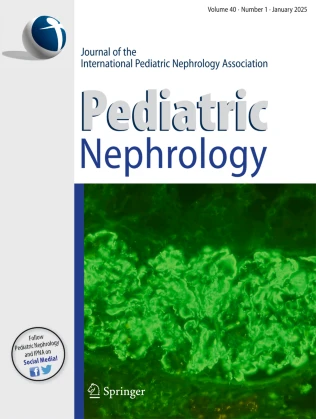Establishing an autogenous vascular access program in a Guatemalan comprehensive pediatric nephrology center
Pediatric Nephrology | September 3, 2024 | PDF

Background: The Guatemalan Foundation for Children with Kidney Diseases collaborated with Bridge of Life, a not-for-profit charitable organization, to establish a vascular access program. We reviewed our experience with graded surgicalresponsibility and structured didactic training, creating arteriovenous fistulas (AVF) for Guatemalan children.
Methods: Pediatric vascular access missions were completed from 2015 to 2023 and analyzed retrospectively. Follow-up was completed by the Guatemalan pediatric surgeons, nephrologists, and nursing staff. AVF patency and patient survival were evaluated by Kaplan–Meier life-table analysis with univariate and multivariable association between patient demographic variables by Cox proportional hazards models.
Results: Among a total of 153 vascular access operations, there were 139 new patient procedures, forming the study group for this review. The mean age was 13.6 years, 42.6% were female, and the mean BMI was 17.3. Radial or ulnar artery-based direct AVFs were established in 100 patients (71.9%) and ten of the 25 transposition procedures. Brachial artery inflow was required in 29 direct AVFs (20.9%). Two patients underwent femoral vein transpositions. Access-related distal ischemia was not encountered. Seven of the AVF patients later required access banding for arm edema; all had previous dialysis catheters (mean = 9, range 4–12). Primary and cumulative patency rates were 84% and 86% at 12 months and 64% and81% at 24 months, respectively. The median follow-up was 12 months. Overall patient survival was 84% and 67% at 12 and24 months, respectively. There were no deaths related to AVF access.
Conclusions: Safe and functional AVFs were established in a teaching environment within a Guatemalan comprehensive pediatric nephrology center.
Read the full report here or find the original article by visiting doi.org.